This time, I want to talk about the Fender Stratocaster 1957-1958 models.
Since the birth of the Stratocaster in 1954, nearly three years passed before the change from the ash body of the 1956 model to an alder body.
Despite some changes in detailed specifications, production continued. The 1954 and 1955 models, as well as the second half of the 1956 model and the 1957 model, have some common features. While the 1954 model is more rare and valuable, the 1957 model, which features a maple neck, is considered the most familiar Stratocaster model in Japan.
By 1957, three years after the Strat was first produced, the production line had finally begun to stabilize. The craftsmanship had improved, and the body contours were the deepest ever seen in Stratocaster history. When viewed from the body’s underside, the shape was beautifully formed. As a result, the body also became lighter, offering a dual benefit.
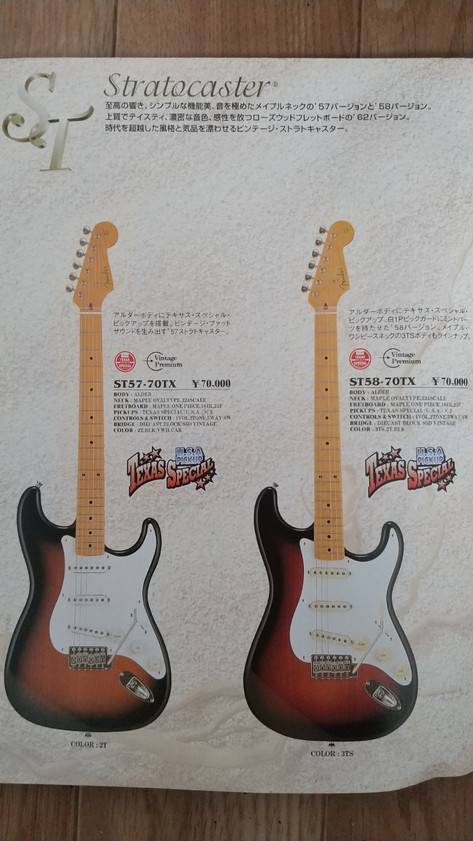
[Body Overview]
The alder wood used at the time was particularly special. It was sourced before large-scale deforestation, likely after the wood had matured. Many professional guitarists assert that “vintage means buying wood.”
I happened to be watching a variety program on NHK, and the topic was, “Why is Stradivari, the king of violins, so expensive?” The answer was: “Because it cannot reproduce the sound of the past.” I was convinced.
Both electric and acoustic guitars, along with many string instruments, rely on wood that has grown in a dense, harsh environment with tight grain (of course, this applies to all instruments made from wood). Low-priced guitars tend to have less pronounced wood grain.
The ash one-piece Stratocaster I own ultimately proves that the foundation of sound lies in the wood.
Regarding modifications, a certain specialist advised, “It’s best to make improvements one at a time. If you change several things at once, it becomes impossible to tell what effect each change had.”
I too continue to update my main Strat little by little and without losing enthusiasm. Recently, I finally purchased a tremolo hanger and two wooden screws supporting the hanger from Sound House and installed them. While the price might shock someone unfamiliar with guitars, once installed, the sound was incredible! The sustain lengthened, and the tone became more focused. It was a solid improvement. I’ll keep the product name secret, but it’s available at Sound House.
Back to the Main Topic
Now, let’s discuss the 1957-1958 Models in more detail.
[Body Material Details]
Both the 1957 and 1958 models used high-quality alder. However, unlike the modern two-piece alder center used today, the 1957-58 models were constructed with the grain slightly offset from the center for gluing.
Why is this?
The Stratocaster’s structure involves cavities for the pickup mounts on the front and the tremolo spring cavity on the back, leaving the center of the body full of holes. Since the area of contact where the wood is glued in the center is small, it was likely to be a problem if a defective product were to occur. For this reason, the wood was glued slightly off-center. Even with alder, which has subtle grain patterns, some guitars show clear signs of the joints.
[Differences in Contours Between the 1957 and 1958 Models]
The 1957 model has deeper and slightly wider contours than the 1958 model, which is slightly more shallow. Even so, the contours still require considerable work.
[1957 V-Neck]
The neck is a pale, yellowish-white V-shape with carved edges, which may feel a little unusual at first. The difference becomes more evident when playing low chords. Over time, I grew fond of this neck. Interestingly, I experienced it on the Eric Clapton model with Lace Sensor pickups, which was discontinued after just one year. This specific neck shape appears to be unique to the 1957 model.
[Control System]
Both the 1957 and 1958 models used Cornell Dubilier capacitors with beeswax potting until 1957. It’s believed that some 1958 models may have still had beeswax potting, but the majority were un-potted with white capacitors. Among these, the capacitors used from 1954 onward have the best tonal ‘muffled’ quality. When turned down, they almost sound like a bass guitar.
Over 15 years ago, I had Cornell Dubilier beeswax-potted capacitors installed in my Strat, costing about ¥7000 with labor. Nowadays, even replicas cost at least ¥3000, so I was lucky. If you find unused 1950s potting-type capacitors now, they might fetch prices higher than what I paid back then. It’s possible that they are no longer available on the market. Starting in 1958, Fender used un-potted white capacitors with blue lettering.
Unfortunately, since 1961, Fender and Custom Shop models have not invested much into capacitors. The capacitors originally installed in my main Strat were very inexpensive, costing only a few hundred yen. I’ve purchased three Custom Shop models, and all of them contained small, cheap red capacitors.
Even the 1954-type Stratocaster built for the 50th anniversary of the Stratocaster had those same inexpensive red capacitors.
Years ago, at a popular repair shop, I was able to listen to guitars with various types of capacitors. When I told the staff which tone I preferred, they named several musicians who had a similar tone to mine.
Ultimately, I realized that capacitors do have an impact on tone.
[Control Knobs, Pickup Covers, Switch Knobs, and Arm Knobs]
After three years, the fragile parts of the 1954 model were replaced with more durable nylon parts. These were stronger but, unfortunately, yellowed over time.
In the 2000 and 2001 Fender Japan catalogues, the 1957 and 1958 Stratocaster models were introduced, with changes in the paint, from 2 Tone Sunburst to 3 Tone Sunburst, and yellowing control parts. Apart from those, the specs were nearly the same. In the end, the 1957 and 1958 Stratocaster models didn’t undergo any significant changes except for the color differences.
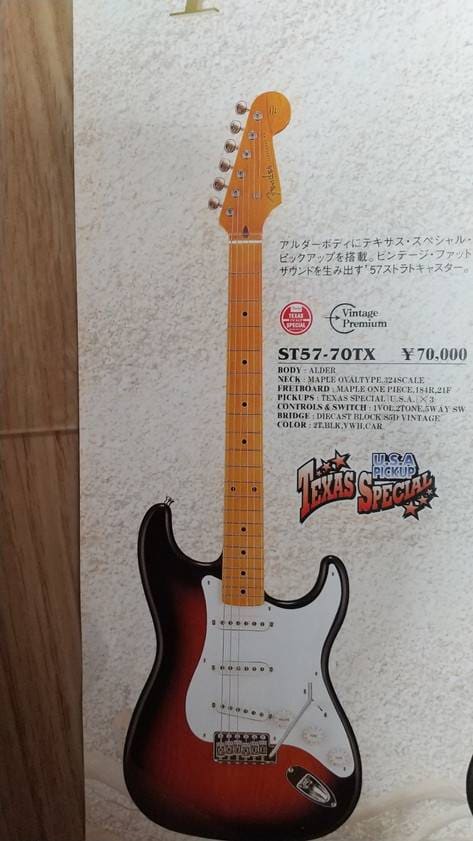
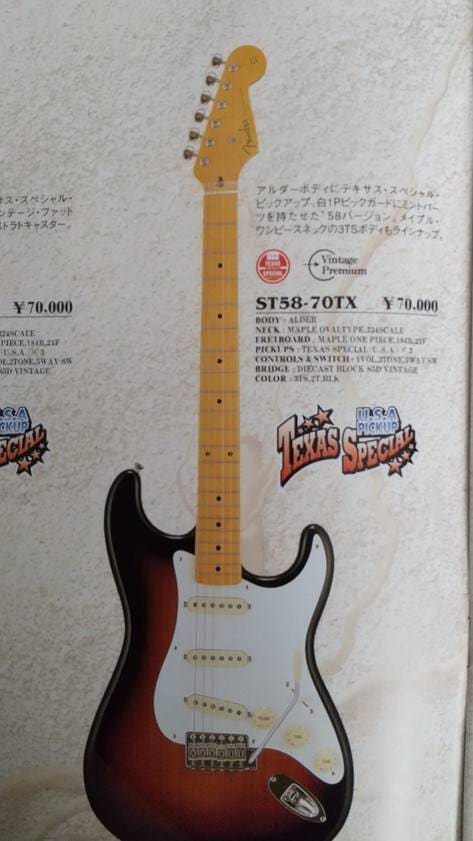
The specification differences include:
● 57 model: 2 Tone Sunburst (2TS), 58 model: 3 Tone Sunburst (3TS) color variation
● Only the yellowing of control parts.
Fender Japan neatly summarizes these differences on one page with just two models, showing their determination at the time.
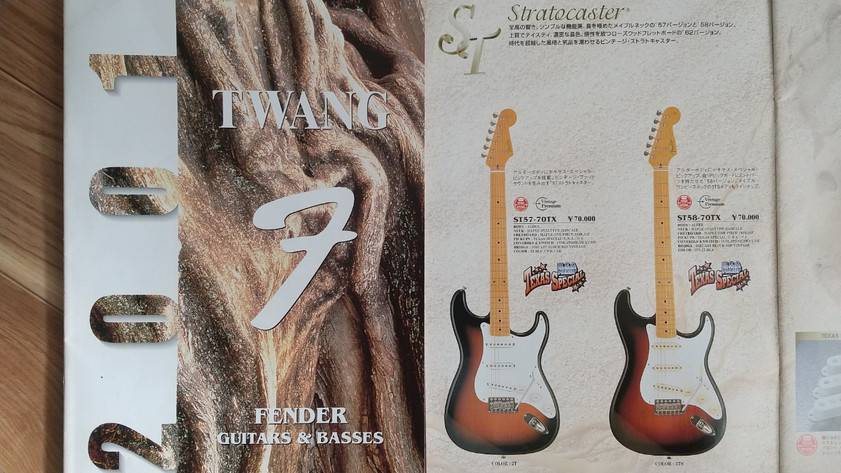
Next time, we will focus on the ever-popular rosewood fingerboard Stratocasters.
Stay tuned!
The “sound & person” column is made up of contributions from you.
For details about contributing, click here.











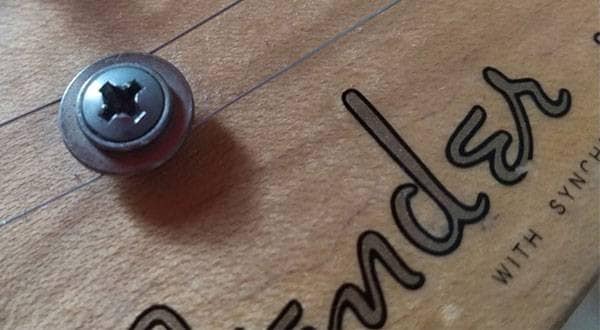
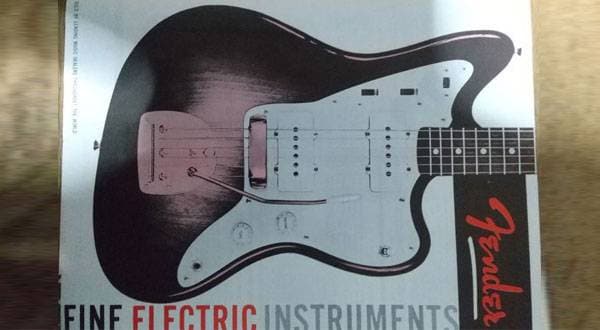
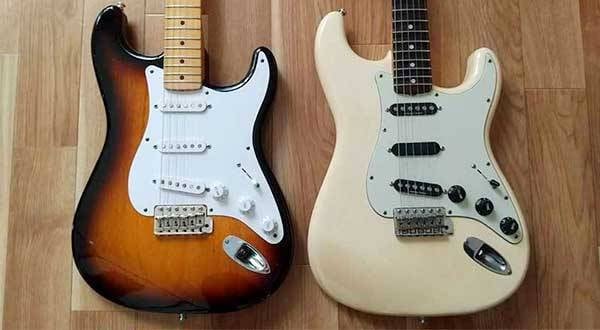
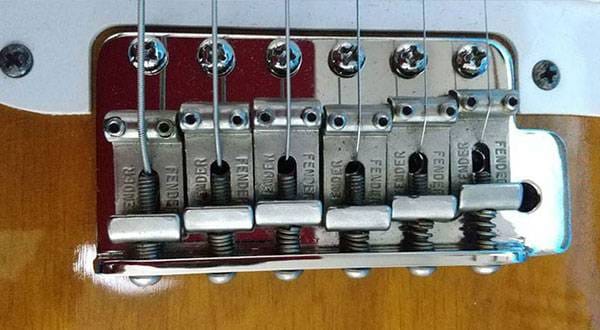

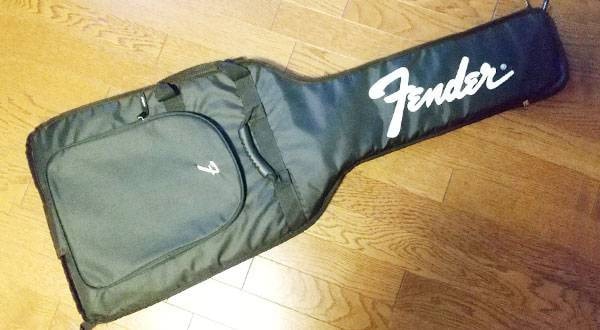
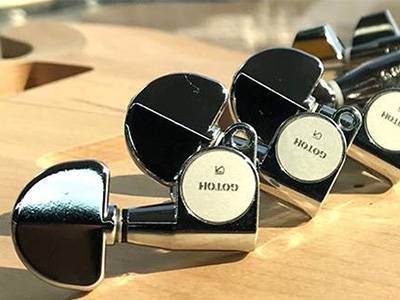 GOTOH(ゴトー)ギター用ペグ よくある質問まとめ!
GOTOH(ゴトー)ギター用ペグ よくある質問まとめ!
 ピックアップ交換大作戦!
ピックアップ交換大作戦!
 FENDER(フェンダー)ブランドサイト
FENDER(フェンダー)ブランドサイト
 ギター 初心者講座
ギター 初心者講座
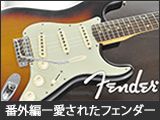 愛されたフェンダーギターたち
愛されたフェンダーギターたち
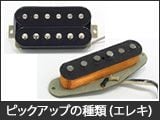 ピックアップの種類(エレキギター)
ピックアップの種類(エレキギター)















